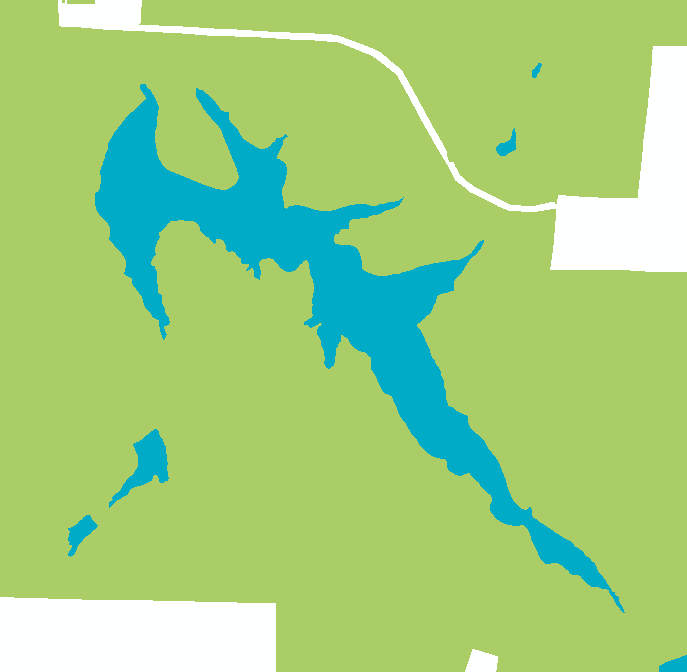What’s a Reservoir?

Look at a map of Winton Lake (Figure 1), Miami Whitewater Forest Lake (Figure 2) or Sharon Lake (Figure 3), and you will notice the irregular, elongated shape of these bodies of water. They appear stretched out and contorted with pointy branches that extend in different directions. In fact, these distinctive features are an indication that these lakes are actually reservoirs — man-made bodies of water created by damming a river or stream.

A dam is basically a barrier constructed across a river or stream to hold back the naturally flowing water. As the water collects behind the barrier, the reservoir forms and fills. Consequently, since many reservoirs are flooded river valleys, they are frequently narrow and long rather than round or oval-shaped like many natural lakes. Although natural lakes are often fed by groundwater and multiple streams, a single large stream or river will often supply a reservoir. It’s likely that water flows out of a reservoir through controlled gates beneath the water’s surface (NALMS 2001).
Furthermore, reservoirs are created to serve a specific purpose: some are utilized for water supply, recreation, flood control or hydroelectric power generation (NALMS 2001). For instance, the massive Hoover Dam – constructed during the Great Depression on the Colorado River – was built to provide all of these services. Here at Great Parks of Hamilton County, Winton Lake was constructed in the early 1950s by the U.S. Army Corps of Engineers to help control flooding on the West Fork of Mill Creek. Alternatively, Miami Whitewater Forest Lake, which was constructed in the late 1960s, and Sharon Lake, which was constructed in 1936 under the Works Progress Administration (WPA), were built for recreation.

In areas of the U.S. like Hamilton County that lack natural lakes formed during the last ice age, reservoirs are very common. Most reservoirs were constructed in the last century (NALMS 2001), but some are much older. For example, the oldest known dam is the Jawa Dam in present-day Jordan, which was built around 3000 BCE for irrigation (NGS Encyclopedia). The Proserpina Dam located in Spain was built by the Romans in the second century, and the reservoir still serves as a water supply for surrounding residents (NALMS 2001).
The reservoirs at the Great Parks offer excellent opportunities for fishing, boating and all-around recreation. For questions about Great Parks water resources, please contact Watershed Specialist Amanda Nurre at 513-728-3551, ext. 274.
—
Amanda Nurre
Watershed Specialist
Citations
National Geographic Society (NGS) Encyclopedia. (n.d.). Reservoir. [online] Available at: https://www.nationalgeographic.org/encyclopedia/reservoir/ [Accessed 15 Feb. 2019].
North American Lake Management Society (NALMS) and Terrene Institute. 2001. Managing Lakes and Reservoirs, 3rd ed. North American Lake Management Society, Madison, WI, and Terrene Institute, Alexandria, VA.
